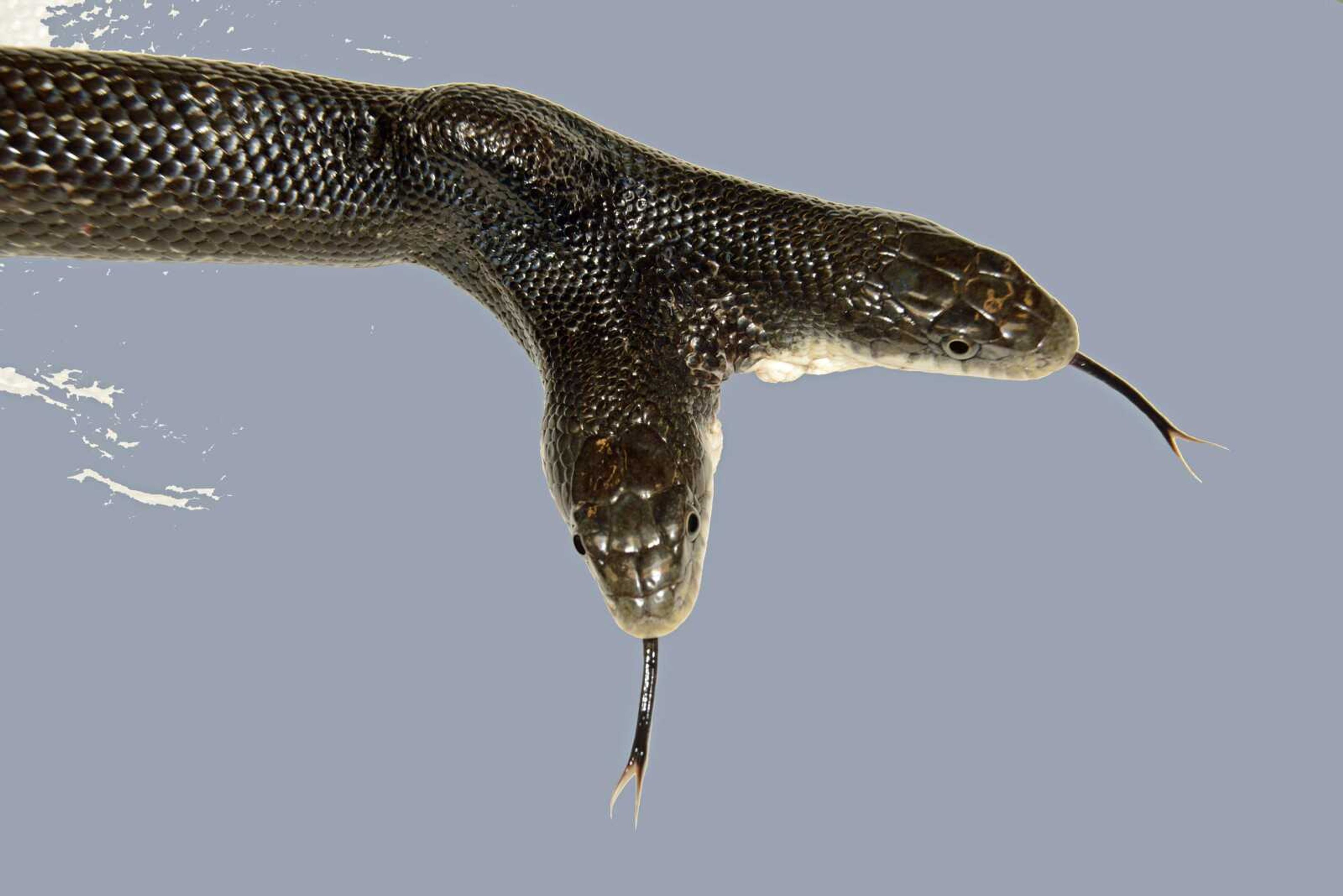An amazing rat snake
Two-headed animals are probably more common -- but short-lived -- than we might think. In the wild an animal born or hatched with two heads is immediately at a great disadvantage. Survival is always in doubt. Decision-making is very difficult. Eating, drinking, walking, running and escaping danger all are severely compromised...
Two-headed animals are probably more common -- but short-lived -- than we might think. In the wild an animal born or hatched with two heads is immediately at a great disadvantage. Survival is always in doubt. Decision-making is very difficult. Eating, drinking, walking, running and escaping danger all are severely compromised.
In captivity, receiving the care and protection provided by merciful humans, a two-headed animal may survive for many years. Most often the very best possible attention given to a two-headed animal will only reap limited success.
The snake shown here is a resident of Cape County Conservation Nature Center. A friendly member of the center staff allowed me to photograph this amazing snake. She told me when feeding the snake, one head must be covered while the other head is fed. Visit the Nature Center and ask to see the remarkable two-headed rat snake.
Through the Woods is a weekly nature photo column by Aaron Horrell. Find this column at semissourian.com to order a reprint of the photo. Find more work by him at the Painted Wren Gallery.
Connect with the Southeast Missourian Newsroom:
For corrections to this story or other insights for the editor, click here. To submit a letter to the editor, click here. To learn about the Southeast Missourian’s AI Policy, click here.











